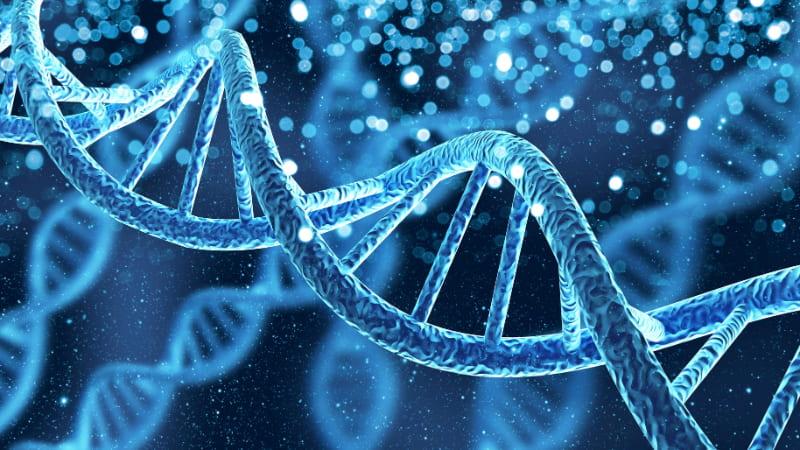
Combined immune deficiency (CID)
Combined immune deficiencies (CID) are a group of primary immunodeficiencies in which both T cells and B cells of the adaptive immune system are either low or function poorly.

Combined immune deficiencies (CID) are a group of primary immunodeficiencies in which both T cells and B cells of the adaptive immune system are either low or function poorly.
CID is a group of rare genetic disorders of the immune system that results in impaired immunity. CID is referred to as 'combined' because both T cells and B cells are affected. Unlike severe combined immunodeficiency (SCID), T cells are usually detectable in CID, and their function can be variably affected.
The clinical spectrum of CID is wide, with some disorders causing mild to moderate disease and others causing severe susceptibility to infections, as well as inflammatory complications due to immune dysregulation (dysfunction of the immune system in which lymphocytes may be present but not work well, allowing for the development of excessive autoreactivity and resultant autoimmune disease and inflammation). Unfortunately, the prognosis of CID is not always easy to determine at the level of the affected individual. This becomes important when considering the relative potential risks vs. the potential benefits of a particular treatment strategy. Fortunately, the success rate of HSCT, particularly for those without an HLA-matched sibling donor, has improved substantially over the past few years, so the risk of this treatment has become much more acceptable for less severely affected individuals.
See if you qualify to participate in clinical trials evaluating new treatments and/or diagnostics for combined immune deficiency.
CID is often first suspected due to clinical symptoms as described above, including frequent or unusual infections, autoimmune disease, and severe allergic disease. Sometimes it may be diagnosed due to a known family history of immunodeficiency. The diagnosis of CID can be very challenging, as lab results may vary widely between the different types of CID. General immunologic blood testing may demonstrate low T and/or B cell numbers, and altered distribution of lymphocyte subsets. In some cases, lymphocyte numbers may be normal in spite of poor cellular function. Poor B cell function is often reflected by low immunoglobulins and/or poor vaccine responses.
Newborn screening for severe combined immunodeficiency (SCID) is routinely done in the U.S. Although newborn screening, which looks for a lack of T cells, is very sensitive for SCID, it does not uncover the majority of the forms of CID. This is because T cells are often present in many forms of CID. Therefore, a normal newborn screen does not eliminate the possibility of CID.
Genetic testing is considered to be the most definitive method of diagnosing CID. Genetic testing involves sequencing (reading) genes that cause CID to look for variants (changes). Most current genetic tests involve sequencing using a panel of genes known to be related and disease-causing for SCID and CID, or providers may opt to sequence all the protein-encoding regions of the genome (whole exome sequencing). This test is often performed on blood but may also be done using a cheek swab. Sequencing may show variants that have been described in other individuals with CID or variants that are entirely new. Predictive analysis can provide some assistance in interpreting new changes, though specialist interpretation and additional testing are often needed to determine if a new variant is likely disease-causing. Sequencing of additional family members can often help in this regard as well.
Prophylaxis, or preventative treatment, against infections is indicated for CID, depending on the degree of immunodeficiency. If an antibody deficiency is present, then Ig replacement therapy should be started. Similarly, depending on the degree of cellular dysfunction, prophylaxis against opportunistic infections, such as herpes viruses, fungi, and Pneumocystis jirovecii, may be indicated. Use of immunosuppressive drugs may be necessary in individuals with significant manifestations of immune dysregulation.
Specific treatment varies but will likely be based on the underlying genetic variant. Our ability to genetically diagnose diseases has transformed treatment for these disorders, as specific inhibitors or promoters of the poorly functioning protein may be available. Recent publications show the beneficial effects of specific inhibitors in certain diseases, although it remains to be proven whether these medications will sustain long-term remission of symptoms.
If the condition is very severe and not amenable to prophylaxis or medications, then a referral for HSCT may be considered. As many of these disorders are newly described, the collective experience with transplantation for any specific type of CID may be limited. It will be important to discuss with the affected individual’s healthcare team how effective transplantation has been in this disease, as well as what the long-term outcome is expected to be with prophylaxis alone or if specific medications for the disease are available. It is likely that indications for transplant or for new medications will continue to change as more is learned about these disorders.
CID is a growing group of disorders, and within many of these disorders, there is a great deal of variability in the disease findings. Supportive therapies are often helpful in reducing complications, and as more is known about these disorders, the recommendations regarding which individuals should be referred for HSCT as well as best methods of transplantation are likely to change.
This page contains general medical and/or legal information that cannot be applied safely to any individual case. Medical and/or legal knowledge and practice can change rapidly. Therefore, this page should not be used as a substitute for professional medical and/or legal advice. Additionally, links to other resources and websites are shared for informational purposes only and should not be considered an endorsement by the Immune Deficiency Foundation.
Adapted from the IDF Patient & Family Handbook for Primary Immunodeficiency Diseases, Sixth Edition.
Copyright ©2019 by Immune Deficiency Foundation, USA
Receive news and helpful resources to your cell phone or inbox. You can change or cancel your subscription at any time.